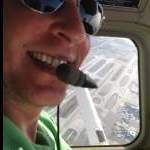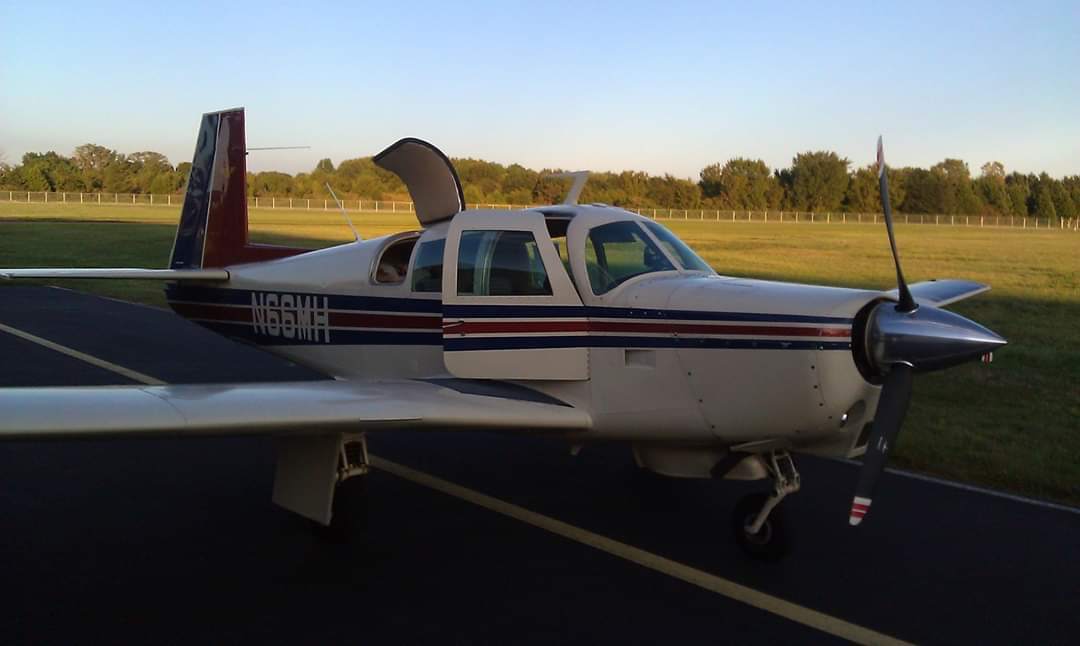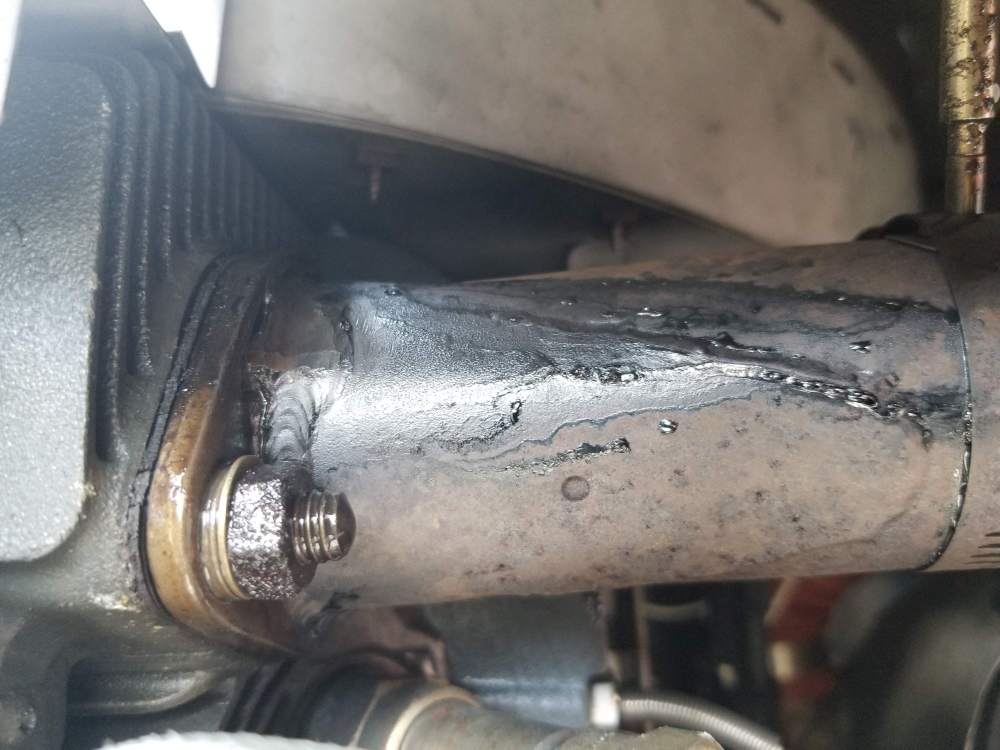-
Posts
565 -
Joined
-
Last visited
-
Days Won
1
Content Type
Profiles
Forums
Blogs
Gallery
Downloads
Media Demo
Events
Everything posted by robert7467
-

turn coordinator alternative advice
robert7467 replied to jamesm's topic in Avionics/Panel Discussion
I have the mid continent electric AI and added a turn coordinator to it. -
These flights occurred over the last 5 years (yes only 5 flights). The plane was down a considerable amount of time. Gear up: I was doing a biannual flight review after a 2 year avionics install. We were doing pattern work and my Sandel 3308 went out (a factor leading up). The instructor was busting my chops of when to drop the gear (I always dropped entering downwind, like I was taught). Then when the runway numbers are next to me, I pull the carb heat, like I was thought. He wanted carb heat pulled on short final. Then we were on final approach, and he kept leaning over my adjusting power settings for that perfect glide slope. Upon flare, I heard a buzzing noise and I pushed the power in and did a go around. I ended up knocking 1/4' off my prop. Lesson learned: brief the instructor on your habilitual, taught procedures prior to the flight, so there is no confusion in the air. Another factor was the Sandel going out. Several distractions led up to the incident, resulting in a gear up prop strike. Even though the instructor had several thousands of hours of flight time, it's still my life on the line. If I would have aviated first, this would have never happened. Even though the prop was in tolerance and we could have just dressed it, we decided to put it in one of the best engine shops around to preserve the resellibility of the plane. Then I picked it up from the engine shop: Did a high RPM runup and the engine guy told me to fly it a couple times around the patch and if all checks out, proceed to home base. I got up in the air and so much oil dumped on the windshield, it was like a solid sheet of ice. Since I couldn't see out the front window, my 3 options were, attempt to land first, then if unsuccessful, find a suitable place to ditch the airplane (water or trees). I ended up slipping the plane in for visibility out of the side window. Then did a no flap (lower angle of decent approach), and when I got low, I just kept popping the nose up like a fishing pole until she sat down. Luckily in the past, I was with an instructor when a landing light went out on final and we practiced that technique. A couple days later I recieved a call saying it was fixed. I showed up to the airport and was told to take it around the patch. The same exact thing happened. Then he tells me that he might have used the wrong prop seal. He puts the new seal in and I take it up, and there was a little oil misting, but it was so minor I figured it was likely residual from the last incidents. Got the plane to home base and she sat for a little bit more. Then annual comes around and I asked the mechanic to check the prop because I wanted to make sure the mist was not a leak. The shop that put my prop on did not match the prop with the dowels (might be wrong terminology), but let's just say the prop was not on right. There is a good chance if I would have flown it, something really really bad would have likely happened. Flight 4: Binannual flight review in a Bonanza by a very, very competent and excellent instructor. Flight 5: in my Mooney, engine failure on takeoff which is discussed in a different post. Mechanically we couldn't have done anything different. We dont skimp on maintenance and repairs. Overall the bird is in tip top shape. Now it's likely a carb issue due to gumming up from sitting, I will know more next week. I think the lessons that I have learned are: You can do a thorough runup, a high RPM runup, but once you put stress on the engine (flight), that's when all the gremlins come out. The high RPM runups did not put enough stress on the engine to indicate any problems. The oil leaks didn't even present themselves after a long standard runup followed up by a high RPM runup. When I was doing my BFR, I learned a lot that day. The instructor on every takeoff had me pull all the way back on the yoke until she lifts off. (Like a short field) This allows you to gain altitude quicker. He also started his turn at around 300'-400' when I was tought 1000'. If you think about it, if his fan quits at 1000' then the impossible turn is not so impossible anymore. Everyone has different ways of doing things and you might not agree with his way, but after evaluating what could have happened during my engine failure, it's all starting to make sense. Many pilots dont experience any of these in their lifetimes, much less the last 5 flights. I think the biggest thing I have learned, is to plan an engine failure on departure. Know what's on the other end of that runway, so if it happens, you can execute your plan immediately without hesitation. Sorry for the lengthy post, but I have been doing a lot of thinking lately. Breaking down each situation and the chain of events that led up to them. Robert
-
Those oil return tubes can drop a lot of oil quick. I had an oil leak that I spent months trying to find, then all hell broke loose. Luckily I caught it in a preflight. The tube was chaffing at the return tube bend where it was rubbing against a baffle. Now as a part of my routine inspections I follow each tube to make sure they are not rubbing against anything.
-
Yeah, thanks for the advice. Right now she is grounded until she gets checked out next week.
-
I agree, but sometimes things are different under different conditions. I thought it was just density altitude causing it to be a little sluggish, which is why I did that second runup and burn off. Everything checked out perfectly. A plane taking off in cooler weather is going to have slightly different characteristics than one in hot weather and that's what I was thinking, but gut feeling something wasn't 100% which is why I verified everything with that second runup.
-
Yes.... did several runups in the past 3 weeks. Then yesterday gave the bird a thorough inspection. Prior to departure, I did a runup and cycled the prop. Takeoff was fine. Upon the 2nd departure, something didn't quite feel right, so I did a full stop, went back to the runup area and did a full mag check, then high RPM runup to knock off any cobwebs, did a 2nd mag check and everything checked out fine. The 3rd departure is when I had engine failure. There was no power. I pulled the headset off my ear so I could hear the engine and it was rough and knocking. Then I pulled the power, opened the door and told ATC that I was aborting the landing, then I set her down.
-
Yeah it was fine, but when I suddenly pushed the power, then it would start hickuping. The old timers at the airport are confident it's a carb issue.
-
Yeah, I did pop the door open. I just went out there this morning and sumped the tanks in case I got bad fuel. There was no water in the system. My hypothesis is: over the course of 5 years, the plan has ran, and sat. Over time, the carb drains, then I refill it to start, then over time the bowl drains (vapor). Eventually goo built up, then fresh fuel goes in and it broke all that stuff up. Or maybe some sealant broke off. I will know more next week when the mechanic looks at it.
-
6000' at home base, I was at the point to where I was just about to pull the gear up. Maybe I wasn't as high as 400', but where I was, and where I am normally at that point, 400' is a safe bet. Everything happened so fast, the little details as far as fuel pressure, cylinder head temps and everything else is a blur. Main thing was to stay calm, fly the plane and get the plane back on the ground then reevaluate. The bird has pretty much been down for 5 years. It last flew by my partner in December just to move it to the new airport. Over the past 3 weeks I gave her several run ups and inspected every inch of that plane to make 100% sure that she was airworthy.
-
Great video to watch and evaluate!
-
Done, like I said, when I first posted this, I was a little on edge so sorry for being all over the place on this post.
-
I didn't turn back on the engine out yesterday. I still had usable runway. I was talking about my BFR experience a couple days ago that got me in the mindset to handle this emergency. This is the first time I flew solo in 5 years and if I didn't have an extreme seat of the pants BFR a couple days ago, then I probably would have frozen up and turned into a yard dart. I was departing KOLV, clear skys and a small headwind. Now I am reevaluating yesterday watching youtube videos on engine loss on departure. All of them are at 1500'. Its easy to talk about engine outs at 1500'. But at 400'? Whew.. The funny thing is my partner was asking me about what the fuel pressure gauge was reading when this was happening. Things happened so fast, if I even looked at the fuel pressure gauge, I would be dead. Aviate first was what we empathized on my BFR and I think the mindset went a long way in handling this situation.
-
. #3 - with landing spot picked, slow down to landing speed, only gear down IMO if you have reasonable room to rollout to a stop. That's one thing he also taught me on my BFR. In an emergency situation wait until the last minute to drop the gear. It's much better to make the runway and land it controlled on its belly vs landing short of the runway.
-
Sorry was little shook up. Yes I had usable runway and landed straight down the runway. Now the turns, the other day during my BFR and we were at a point on downwind and the instructor asked me if I could make the runway, I said yes and pulled back the power. If we were in the Mooney, I could have made it, so I proceeded to turn and wasn't going to make it, so the instructor grabbed the controls and did a 90 degree bank and we made it. Now would I do a 90 degree bank as practice in the pattern, absolutely not. But if I had an emergency and no other option, now I have one. The whole point is, get with a high time, stick and rudder instructor. That mindset of grabbing the bull by the horns, not freezing up and flying the airplane went a long way into yesterday's situation. Now it looks like we are going to do more practice in his Decathlon. There is a lot that I learned on my BFR. I hand flew 2.5 hrs of IMC, when I only had foggle time in the past. Now if I were to inadvertently fly into IMC, I am much more confident in getting out of it. This guy has over 10k hours in small planes, gliders and aerobatics. He had his ATP by the time he entered college and tested out 40 credit hours in 1 semester. As soon as the plane is fixed I am starting my IFR at a flight school, then supplementing instruction with this super pilot. Just little things I picked up from him, collectively add up. I can get more into my flight review, but I know it will stir things up a little on a public forum. Going forward I am sure I am going to do a lot more upset training with him and possibly do some glider time. He has proven to me that day that I couldn't get the plane down with the standard emergency procedures that I have been taught. There is lot lot more for me to learn and I am excited about the next chapters.
-
The mechanic is coming out next week to look at it. Its likely a carb issue. I will let you guys know our findindings. Luckily I did have a little usable runway and was able to land safely.
-
Well, I managed to put her down on the runway without incident! All I can say is aviate! Train for steep turns in the pattern. My BFR that I completed the other day, we were doing 90 degrees in the pattern. This time it was a real life engine out at 400'. Fly with a pilot that has several thousands of hours flying whatever (gliders, glider aerobatics, pushing the envelopes on all aircraft) and you will learn stuff that will save your life. Its controlled physcosis at it's best, but you can learn so much!
-
To make matters worse, the pilot did not file a flight plan!
-
Let's just call him a friend for now. We will call him Jim!
-
Engine out on takeoff at 400'.
-
I had 2 of them, both of which I took apart to see if I could combine parts to make 1 good unit. Both of the LCD screens were delaminated. I purchased one for $1k by trading in the other 2 for parts.
-
Several areas are wet, but no major accumulation. I am thinking that it might just be residual, or it could be coming from the filler tube "not tight enough", I still dont know how oil got to where it was, but with all the wind, it could have blown upwards then trickled down. I am about to buy a ton of brake clean, then give her another good runup.
-
Just discovered an oil leak. Normally I wash the engine with AVGAS or Kerosene, then run idle, then look. I saw these UV flashlights at Autozone. Anyone have any experience with these, or any better ideas on chasing these down? The engine shop put the prop on wrong (it almost killed me), and I have only ran it an hr since. Maybe residual from that incident? Oil return tubes and valve covers look ok. I didn't really dig that deep into it, but I am this weekend.
-
Gotcha, I guess no need for a 1 piece, I just need to figure out this compass issue.
-
I saw an avionics install without avionics bay access and it's my worse nightmare. I will lose a couple MPH to keep my sanity.





